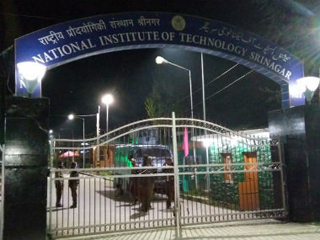Pathankot City


It is a tragic insult to the memory of the late Mufti Mohammed Sayeed, former Chief Minister of Jammu and Kashmir, that the People’s Democratic Party’s youth leaders appear to have been emotionally carried away in defence of the Jammu and Kashmir Police’s (JKP) recent excesses over the past few days.
Mufti Sayeed is remembered with great regard by many Kashmiris for his ‘healing touch’ policy in Kashmir when he was the Chief Minister of Jammu and Kashmir between 2002 and 2005, but most of all for reining in the excesses of the state police force.
The Special Operations Groups of the force quite often behaved with impunity in the years from about 2007 till about the turn of the century, trampling the rights of common people with derision, while going about their counterinsurgency operations. Mufti Sayeed put a stop to that. That led to a great reduction of public support for militancy during the middle of the previous decade.
Militancy is on the rise again, partly owing to the excesses of the state police force in 2010 (the summer of ‘stone-pelting’), and 2011. Since Wednesday night, youth leaders of the People’s Democratic Party (PDP) have gone about defending the police atrocities at the NIT campus. Their strategy is to pretend that it is the ‘patriotism’ and ‘nationalism’ of the JKP that is under attack.
This is plain ridiculous. If the patriotism and dedication to the Indian nation of a force, of which each member wears a uniform with the President’s Police medal badge on his or her sleeve, and joins the force only after taking an oath of patriotic allegiance and duty, is even open to question, then the entire force might as well be wound up and sent home.
The fact is that the violent excesses of this police force are being questioned, not its patriotism. But the putative youth leaders of the PDP – who have, perhaps inadvertently, cast a dark shadow on the memory of Mufti Sayeed – seem to equate patriotism with torture and intimidation.
On Thursday, a social media post from one of them suggested that an infamously brutal police station in Srinagar was proof of the force’s patriotism. To common Kashmiris, the name of that station has denoted horror, particularly during the 1990s.
One of the events that kicked off the militancy which began in 1988 was the beating of young Hamid Sheikh in that police station by the National Conference’s late general secretary, who was the party’s candidate in the rigged 1987 elections. On polling day, he beat Sheikh with his slipper, shouting casteist invectives, while police personnel held the young man so that he could not retaliate.
In early 1988, Sheikh was among the first five Kashmiris who crossed the Line of Control for arms training. By 1989, he had become a commander of the JKLF. He was beaten at that police station for having been a polling agent for Yousuf Shah, who was the candidate for Amira Kadal constituency (in which ‘Cargo’ is located). In 1990, Shah became the Hizb-ul Mujahideen chief, taking the nom de guerre Syed Salahuddin.
Almost 30 years on, the rigging of the 1987 elections is universally acknowledged by Indian strategic thinkers to be a huge folly. Surely activists of the party in power in Kashmir can project a different face of India among a new generation in Kashmir than that police station?
On Wednesday, another of the party’s youth leaders defended the police’s brutality against NIT students by pointing out that the Mirwaiz’s house is 100 metres from the institute’s gate. The point was apparently calculated to conjure horrific images in the minds of people across India who might confuse the Mirwaiz’s politics with terrorist activity.
The fact is that the young Mirwaiz lives in a mansion in an upper crust neighbourhood near the Nagin lake with his widowed mother and young, US-educated wife. The youth propagandist could not possibly have thought that Mirwaiz, his wife and mother, personal secretary and gardener were likely to emerge on the road with brooms and dusters to assault the NIT’s non-Kashmiri students. So could he possibly have meant that they might be aided in riotous acts by the police and CRPF guards at their gates? One would think not.
Cut to the nub, the main point to consider is that there is a fine line between containing terrorism and fueling fresh militancy. Police atrocities have too often crossed that fine line, generating more militancy than it has suppressed. The recent spate of encounters in south Kashmir is an indicator of that.
The excessive action at the NIT campus on Tuesday evening was only a glimpse of what common Kashmiris have experienced for years. Particularly during 2010 and in February 2011, police excesses were decidedly counterproductive. The country and its security infrastructure are paying a heavy price for it.
The resultant challenge to national security could become much worse in the near future. The sooner we acknowledge that, and act to change things, the more likely we are to prevent an escalation in militancy.
While so doing, one must of course strike a balance between maintaining the morale of a force and restraining its excesses. Mufti Sayeed struck that balance effectively, as the Home Minister of India in 1990 and as Chief Minister of the state from 2002 to 2005. We should all take a lesson from his example.
Copyright © 2024 About Pathankot | Website by RankSmartz ( )
)